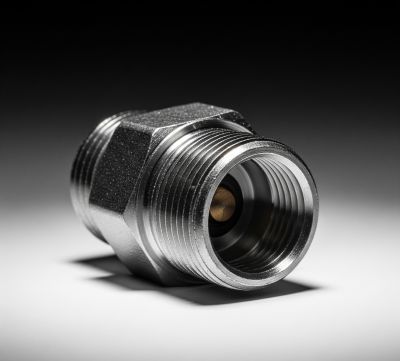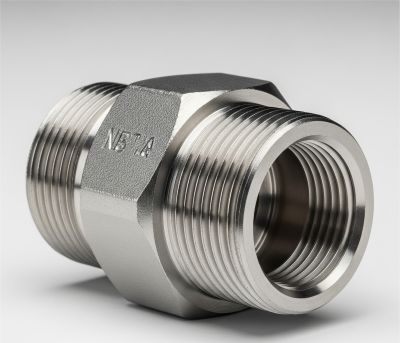At first glance, MPT (Male Pipe Thread) and NPT (National Pipe Thread) sound like two different thread standards. But here’s the twist: they’re not actually in competition. In fact, one is a gender designation, and the other is a thread standard. Because the terms often show up together on parts and product listings, they’re commonly confused.
This post will clarify what each term means, how they relate, and how to ensure you’re choosing the right fitting every time.
What is MPT (Male Pipe Thread)?
MPT refers to the male end of a threaded fitting. It features external threads that are designed to screw into a female (internal) thread.
MPT fittings are typically NPT-style threads, meaning they’re tapered. However, MPT only describes the gender, not the thread standard itself.
Common Applications
-
Plumbing systems
-
Compressed air lines
-
Natural gas or propane connections
⚠️ Important Note: MPT is not a threading standard. It’s a shorthand for a male-threaded fitting, often assumed to be NPT unless specified otherwise (e.g., BSPT or metric).
What is NPT (National Pipe Thread)?
NPT is a standardized thread type widely used in North America. It’s governed by ANSI/ASME B1.20.1 and is characterized by its tapered thread design.
Key Features
1. Tapered threads that create a tighter, leak-resistant seal.
2. Threads are measured by nominal pipe size (e.g., 1/2″, 3/4″).
3. Available in both male (MNPT) and female (FNPT) versions.
Common Applications
➡️ Potable water systems
➡️ Gas distribution
➡️ Hydraulic lines
➡️ Industrial piping systems
MPT vs NPT: Understanding the Real Difference
➡️ MPT = Male + Thread Type
➡️ NPT = Thread Standard
Most MPT fittings are male NPT fittings. The confusion arises because “MPT” is often used in shorthand where “MNPT” would be more accurate.
Key Clarification
If a fitting is listed as “1/2″ MPT,” it almost always means “1/2″ Male NPT.” But you should always verify the thread standard—especially if sourcing internationally, where BSP (British Standard Pipe) is also common.
Thread Design: Tapered vs. Straight
NPT threads are tapered, which means they narrow as they go deeper. This design creates a mechanical seal as the threads compress against each other.
Some other thread standards (like NPS or BSPP) use straight threads, which require an O-ring or gasket to prevent leaks.
Why Taper Matters
➡️ Tapered threads help prevent leaks without needing excessive torque.
➡️ It’s crucial to apply thread sealant or PTFE tape on NPT connections for leak-proof performance.
Compatibility and Fit
Mixing MPT and NPT fittings is usually fine if the MPT uses NPT threading, which is often the case. However, mixing incompatible thread types (e.g., BSP with NPT) will result in poor fit, leaks, or stripped threads.
Best Practices
1. Match thread types (NPT to NPT, BSP to BSP).
2. Inspect threads for damage or wear before assembly.
3. Use proper torque—do not overtighten.
4. Always use thread sealant or PTFE tape on tapered threads.
Common Mistakes and How to Avoid Them
1. Assuming MPT is a separate thread type – It’s a designation, not a standard.
2. Mixing NPT with BSP – These have different thread pitches and angles.
3. Over-tightening fittings – Can strip threads or crack fittings.
4. Skipping sealant on tapered threads – Leads to leaks under pressure.
Pros and Cons Summary Table
|
Feature |
MPT (Male Pipe Thread) |
NPT (National Pipe Thread) |
|
Definition |
Male end of a threaded fitting |
Standardized U.S. thread type |
|
Thread Type |
Typically NPT (tapered) |
Tapered, ANSI standard |
|
Use Case |
Designates thread gender |
Designates thread shape/standard |
|
Confusion Risk |
High (often misunderstood) |
Medium (confused with NPS, BSP) |
|
Compatibility |
Depends on thread type |
Compatible with other NPT threads |
Expert Advice / Industry Insight
“One of the most common issues we see on job sites is misidentifying thread types. MPT is not a standard—it’s a description. Always look for NPT or BSP labeling and check part specs.”
– Mike Langford, Master Plumber & Pipefitting Instructor
Many U.S.-based manufacturers follow the ANSI/ASME B1.20.1 standard for NPT threads. Some international suppliers may use BSPT or metric threads, so double-check product datasheets or consult with your supplier.
Conclusion
✅ The Bottom Line:
1. MPT = Gender (Male), usually NPT thread
2. NPT = National thread standard (tapered design)
Before buying or connecting fittings, make sure to:
➡️ Verify both gender and thread type
➡️ Use proper sealant
➡️ Never assume compatibility without checking specifications
When in doubt, consult the manufacturer or use a thread gauge. A small oversight can lead to big problems, so getting it right the first time pays off.
Post time: May-27-2025



